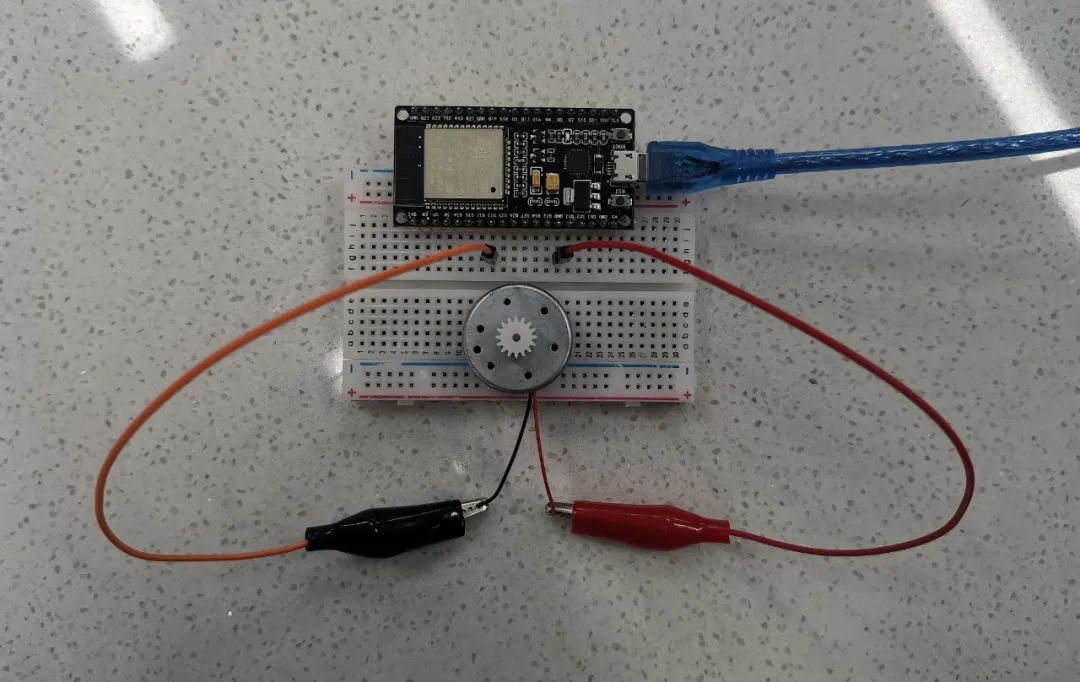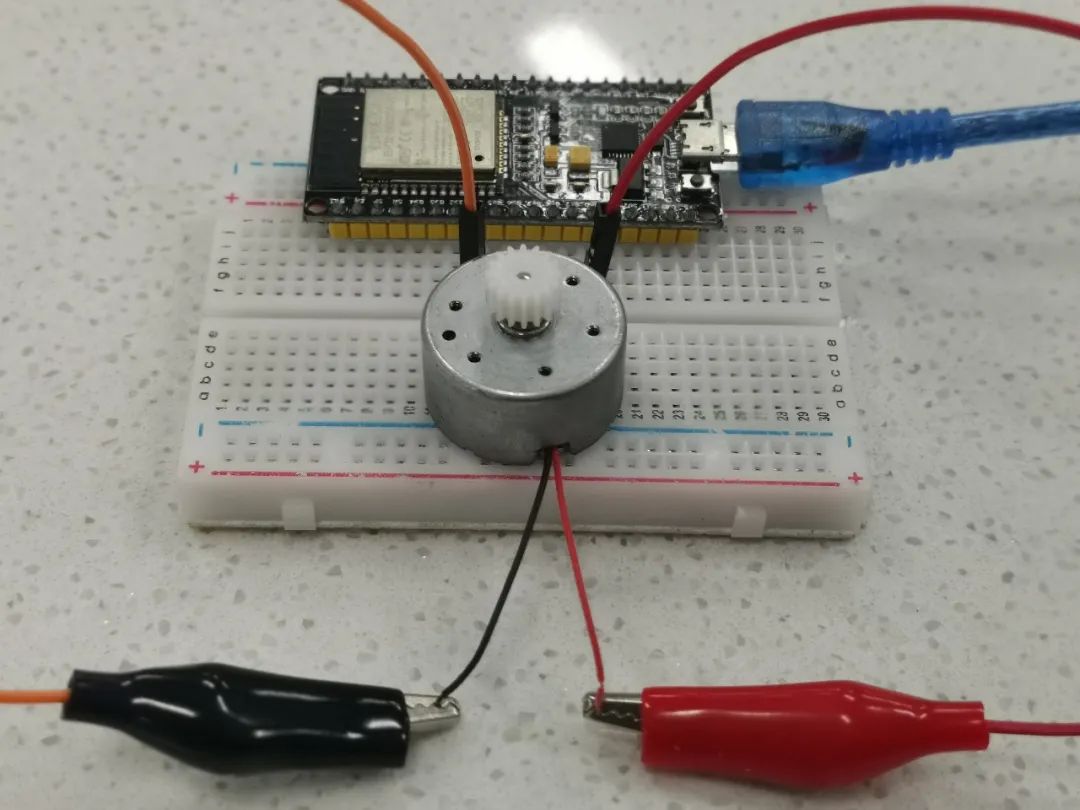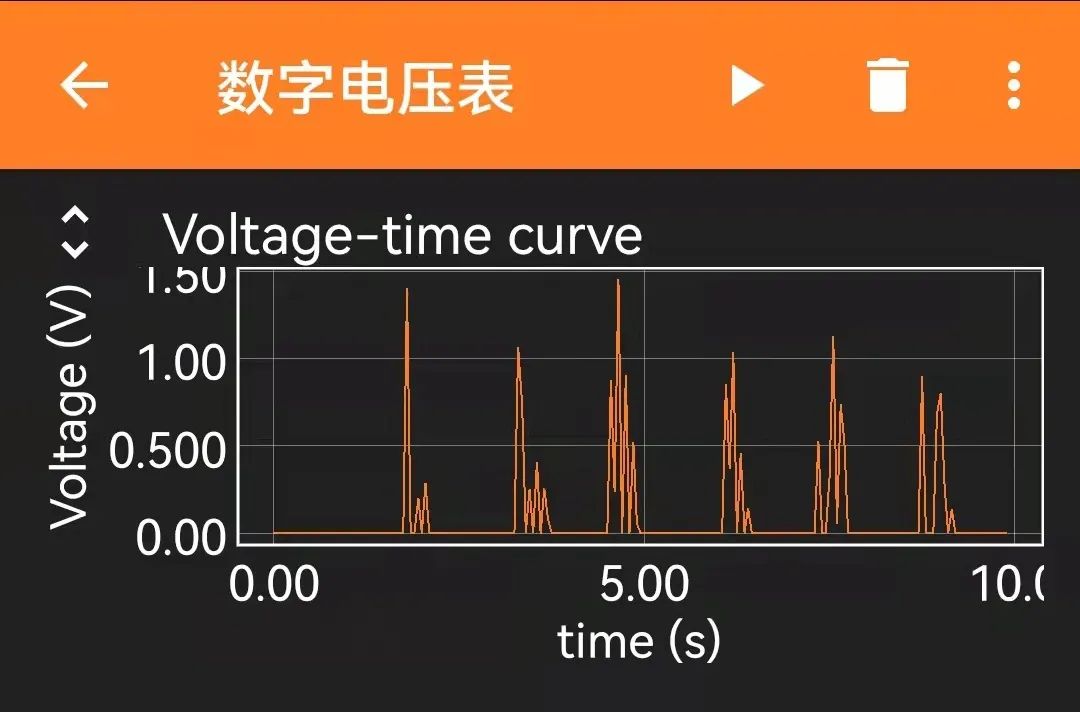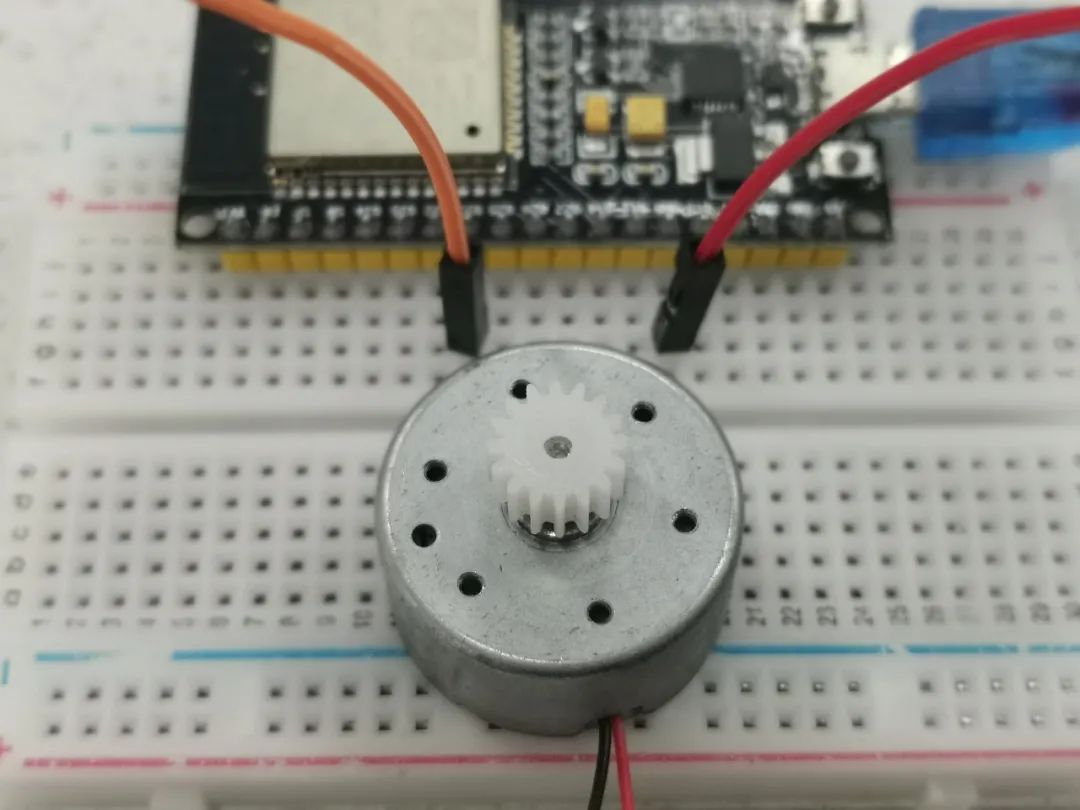
Recently, I was inspired by the quality lesson activities conducted by the city’s backbone teachers at the school. During the listening and evaluation session, I managed to use Phyphox and ESP32 to jointly capture the current change images produced by the rotation of a small motor’s rotor, which was quite exciting.

After building the experimental circuit on a breadboard, I connected the red and black wires supplying power to the small motor to the IO33 pin and GND pin on the ESP32 development board, respectively. I then burned the pre-written digital voltmeter program into the ESP32, set up the Bluetooth connection between the smartphone and the ESP32, and loaded the experimental program via Bluetooth, ensuring that the experimental program was running.

At this point, gently rotating the rotor of the small motor with my hand displayed the relationship graph of the induced electromotive force generated by the rotor coil cutting through the magnetic field lines over time on the smartphone screen. It is important to note that the ESP32 can only measure positive voltage; thus, the rotor of the small motor needs to be rotated back and forth to find the direction of the induced electromotive force that the ESP32 can measure. By rotating the rotor in that direction, the induced electromotive force image generated by the small motor’s rotor can be seen on the smartphone screen.
In this experiment, the sampling frequency of the ESP32 was set to 100Hz, providing high accuracy. The measured changes in the induced electromotive force were quite dramatic, as the rotor of the small motor has three coils connected to the power supply via brushes, and the presence of brushes can cause interruptions in the output of the induced electromotive force.
If the induced electromotive force data collected in Phyphox is processed with Gaussian smoothing, a relatively smooth curve can be obtained.
